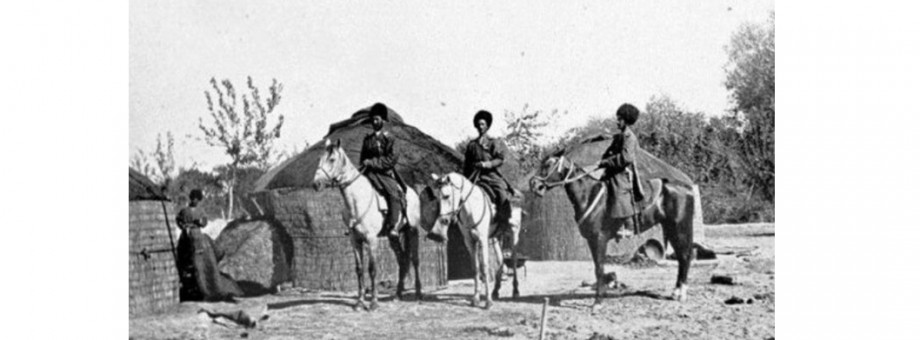TURKMENS IN THE NOTES OF RUSSIAN TRAVELERS

The traveler is a discoverer. And it doesn't matter at all that before he entered the previously unknown territory, it was explored by someone earlier and is no longer officially considered "terra incognito". In his wanderings around the world, each traveler continues the work of his predecessors, finding and describing new details of current life that have escaped their sight, details of everyday life, observing and studying the character traits of the local population. Discovering a new land for himself, the traveler, first of all, discovers the people living on it. And this is perhaps the most interesting part of his research, because without people, the earth is dead. Today we bring to the attention of our readers a selection of observations made by Russian travelers in different years of the late 19th - early 20th centuries.
“... The whole area from Kizyl-Arvat to Gyaurs makes up Askhabad district or Akhal-Tekinsky oasis. The main population here are the Turkmen - Teke (Teke). All of them are mostly tall, slender, with expressive features and a proud bearing, and high ram hats further increase their height. The Turkmen costume consists of a white coarse calico or red silk shirt, and white or dark coarse calico trousers of incredible width and one or two, depending on the season, dressing gowns, worn one on top of the other. These robes do not in the least spoil their figure; many of the Turkmens wear them with such dapperness that they do not feel any awkwardness in their movements. Turkmens wear woolen socks and mules on their feet, and while riding, they wear large yellow yuft boots. In winter, in addition, all men dress in warm lamb coats...
The dress of Turkmen women consists of wide trousers, tapering downward, where they fit tightly to the leg, and a wide shirt worn over the trousers; the breast part of the shirt is dotted in several rows with small silver coins, and a high headband. Like men, all Turkmen women wear robes. Married women sometimes tighten their waist with a scarf over a shirt. Turkmen women wear stockings and shoes on their feet. A silver forehead is worn on the forehead, silver oval bracelets are worn on the hands, and a handbag trimmed with silver over the shoulder is intended for prayers to rid oneself of the evil eye.
The living conditions of the Turkmen are still (as of 1900) preserved intact and are purely patriarchal. And their social life is based exclusively on the generic principle, which does not in the least hinder personal freedom. ... The Teke Turkmen never knew power over them and was proud of it. “A Turkmen does not need a shade of a tree or a shade of power,” says a typical Tekin proverb. Adat, a customary law governing personal and family relations, enjoyed universal respect. The procedure for the use of water and irrigated land is strictly regulated, and there are special persons who lead unremitting observance of the established rules.
In moral terms, the Turkmen are very high. They are very truthful, honest, and greatly value their trust. Today ... all the Turkmens in the region have become the most peaceful settlers - farmers, cattle breeders, cotton growers and give the impression of a pacified, full of strength, fresh, honest, unspoiled by eastern flattery of the people, not devoid of self-esteem and nobility. "
“The Turkmens inhabiting the Trans-Caspian region differ sharply from the residents of other Turkestan regions. This is a people with established purely knightly views on the honor of their own and their families. The offender of this honor is considered impossible to leave without punishment (in severe cases, the issue of honor is resolved by blood feud. ... However, bloodshed exists more speculatively. In fact, here, among the Turkmens, bloodshed is almost never allowed, and conflicts are usually moral damage".
“The Turkmen consider hospitality to be their sacred duty; every guest can be sure of the safety of his and his property, since he is under the roof of the first Turkmen-Tekin who turns up. If it happened that a horse was stolen from a guest, although in principle this is impossible, he will be given his own for departure. In addition to hospitality, the character of the Turkmen is distinguished by truthfulness, honesty, respect for the elderly and obedience to the requirements of customs. "
This is just a small fraction of documentary evidence about the identity of the Turkmen people, left by Russian travelers who studied the history of the region. As time goes on, social relations, economic priorities change, but the character traits of the people inhabiting this ancient country remain unchanged.
Vladimir Zarembo
Turkmens in the Notes of Russian Travelers (turkmenistan.gov.tm)


 NEWS
NEWS